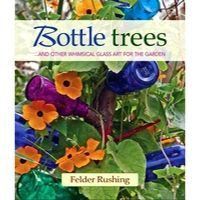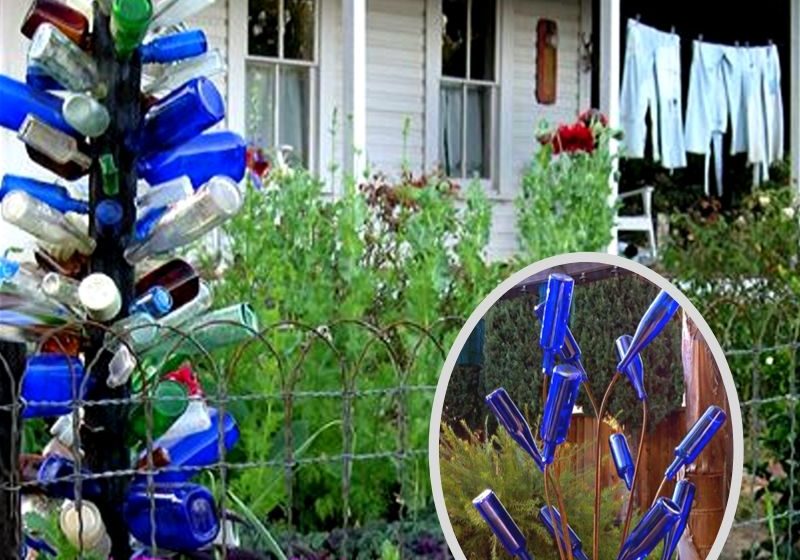
Wine bottle trees are hot in garden decor right now and it’s no wonder why. They are a beautiful way to introduce garden art to any landscape. Bottle trees make a nice focal point, adding vertical color and interest. I especially love the way the colored bottles glimmer in the morning and evening sunlight. They even have a somewhat interesting history, read on to find out more…
Some Bottle Tree History & Lore
The history of bottle trees is a bit mysterious and complicated. Their origins can be traced all the way back to Arabia over three thousand years ago with superstitions of genies in-a-bottle.
This could have been the origins of later cultures in Africa and Europe that believed dark spirits can be trapped in glass bottles.
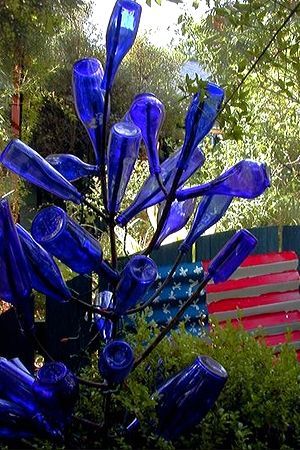
Long ago, bottle trees were made by placing bottles upside down on the branches of dead trees. You may find some in the countryside that are still made this way.
Bottle trees today are more commonly made with a metal frame (usually being rebar or copper pipe) or a simple 4×4 with nails long enough to hold wine bottles.
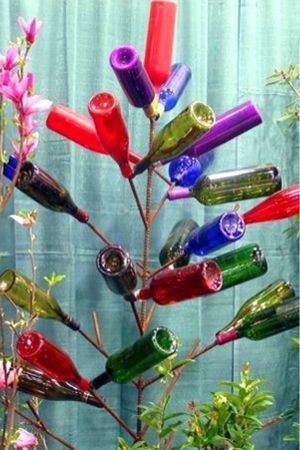
Choosing Bottles
Any wine, beer, or liquor bottle will work. Cobalt blue bottles are very popular. You can often find very attractive glass liquid soap dispensers at homeware retailers. Vintage green wine bottles with the labels on are also very popular, another great choice is to use a variety of different shapes and color bottles.
If you enjoy beer, Bud light platinum is sold in cobalt blue bottles. A 12-pack is less than $15. Some people have been known to give their wedding day wine bottles a new purpose by memorializing them on a bottle tree.
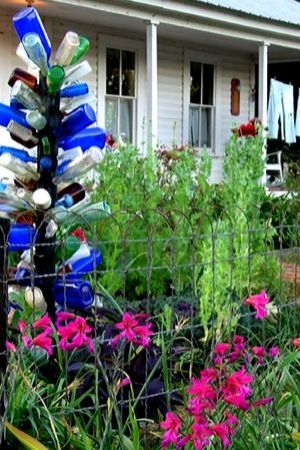
Rebar Bottle Trees
Rebar is very durable and relatively easy to work with. No welding is necessary if you use metal collar ties. Don’t like the rust color? Clean the rebar with sandpaper and a cloth, then apply black or brown spray paint before placing bottles on the tree.
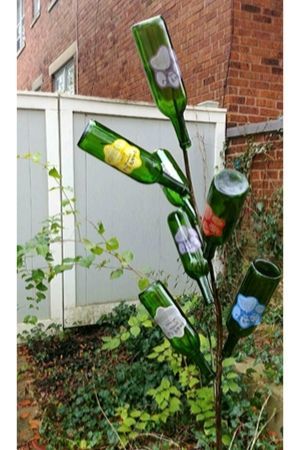
For bottle trees, use ⅜ to ½ inch rebar. For a detailed tutorial on rebar bottle trees click here.
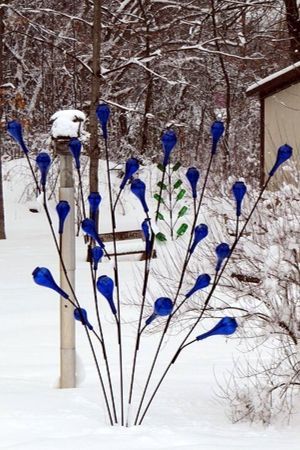
Bottle trees in the landscape really stand out in the snow.
Wooden Post Bottle Trees
These are the easiest to make yourself. One of the added benefits of using a square 4×4 or a round wooden post is that the ‘trunk’ of these bottle trees can support an almost unlimited number of bottles.
Use very long nails driven in at an angle or drill holes into the post to receive wooden dowel rods, then dig a hole 1 ½ to 2-foot diameter, insert post into the hole, then pour concrete into the hole.
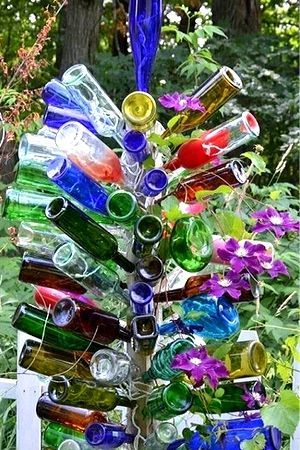
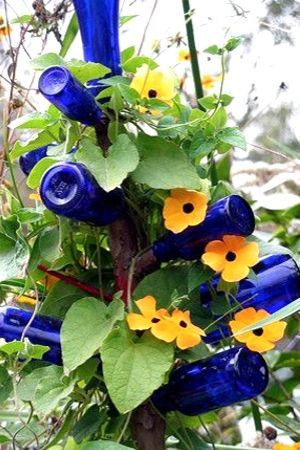
Bottle trees on wooden posts also make a nice trellis to grow annual vines onto.
Wine Bottle Sunflower Plants
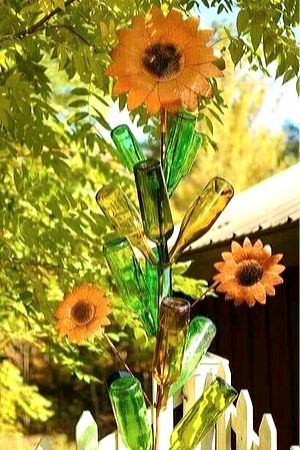
This is an interesting twist on the original bottle trees you find out there. Replace one or more “sunflowers” on a few of the branches where you would normally place a bottle. Using green bottles for leaves adds to the desired sunflower effect. I would use the more realistic looking silk sunflowers from craft stores rather than the plastic ones shown above.
Copper Pipe Bottle Trees
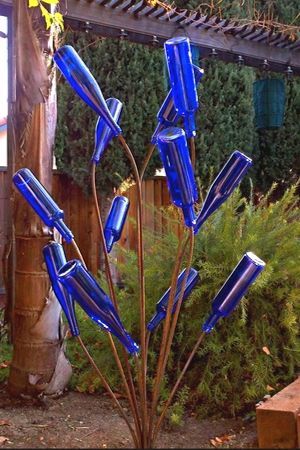
Copper is very versatile so that you can make almost any kind of bottle tree or bottle bush in any shape you can imagine. However, as a material, it doesn’t come very cheap (I’ll show you a way to get a similar look to copper but not as expensive below). I like the way copper patinas over time. It’s worth the added cost in my opinion.
One good thing to know about working with copper as garden art is that you don’t have to solder any of the joints! Hardware stores sell adhesive products made specifically to join copper pipes and fittings together without soldering. These adhesives can hold up to 500 pounds per square inch in 5 hours after bonding.
For strength, use at least ½-inch or greater diameter pipe or tubing. You will also need a pipe cutting tool and a pipe bending spring. When bending copper pipe in a smooth-arc shape, the pipe will tend to crease and kink in one spot. A pipe bending spring prevents the pipe from bending too much in one spot so that you will not get a crease.
For a full tutorial on how to make a bottle tree with copper (pictured below), click here.
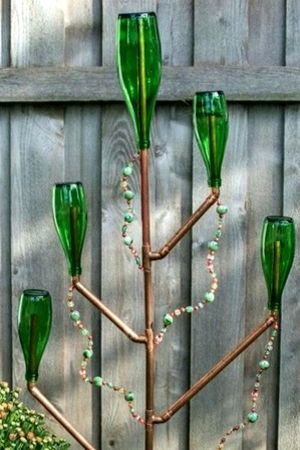
The Cheaper-Than-Copper Method
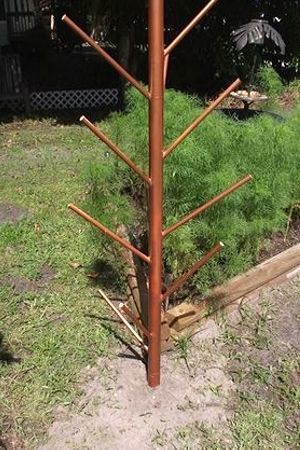
The cheaper-than-copper bottle tree frame.
To save on materials, pvc can be used in place of copper. After assembly, the pvc is sprayed with a metallic copper paint. Read the full tutorial here.
Preparing A Base
You could just drive a rebar or copper pipe tree into the ground but this may not be stable in the wind after the weight of a few wine bottles are added. After all, you don’t want to possibly break the bottles leaving you with broken glass everywhere.
For a patio bottle tree, choose a good sized container or planter, then after you place the bottle tree inside the planter and fill halfway with gravel or all the way to the top. The other half can be filled with potting soil and plants if desired.
If you are using either a tall bottle tree or you plan to place more than 6 or 7 bottles on the tree, a poured concrete base is the safest option.
Lighted Bottle Trees
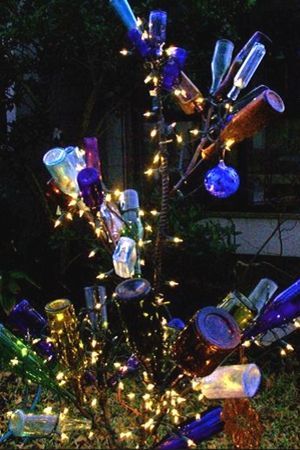
Lighting a bottle tree adds drama and interest at night. For lighting a bottle tree, you have a couple of options:
- String a strand or two of some Christmas lights around the branches and inside the bottles.
- Use landscape lighting at the base of the tree pointing up towards the bottles.
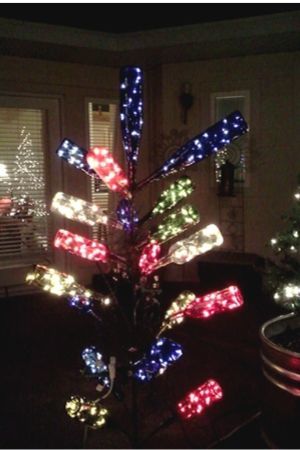
Patio-Container Bottle Trees
If your home-owners association is a little fussy about placing a bottle tree right out in the front yard, the backyard is always an option!
Alternatively, a patio bottle tree is a more subdued version of the bottle tree that might not scream at your neighbors.
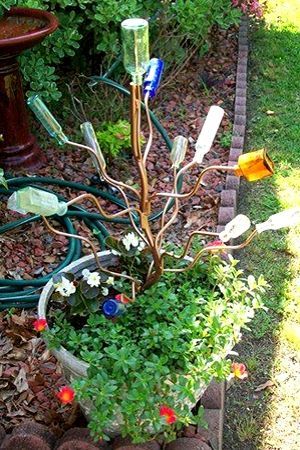
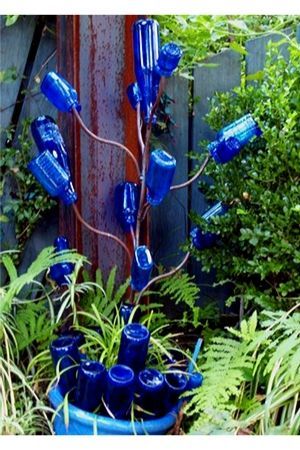
For you non-do-it-yourselfers out there, bottle tree frames (without the bottles) and colored bottle collections from cobalt blue to many assorted colors and shapes are available on Amazon. I’m not aware of any major retailers that sell bottle trees.
More On Wine & Glass Bottles In The Landscape:
I’d like to thank Felder Rushing for most of the historical research. I learned quite a bit about bottle trees from him. Felder has documented and captured great images of bottle trees from his travels around the world.
He wrote a very interesting book if you would like to know more about bottle trees or you would love to have a great new coffee table book, I definitely recommend it. You can buy it on Amazon by clicking here.
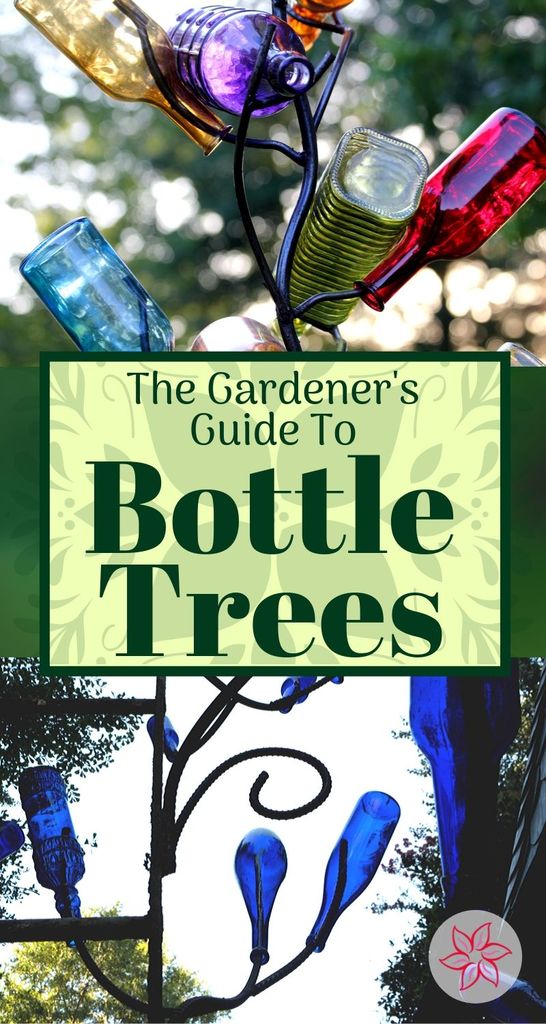
PIN ME!!!

